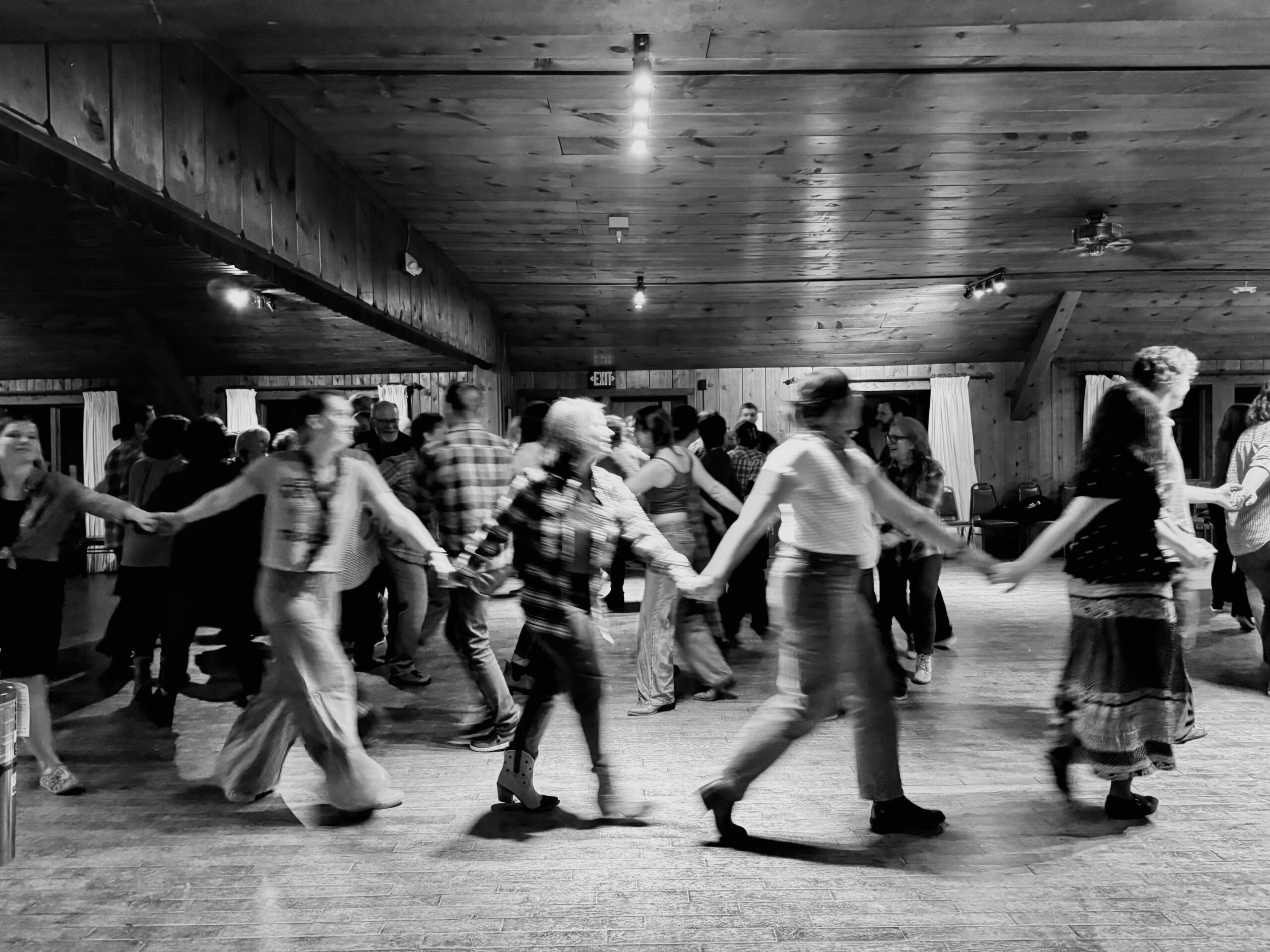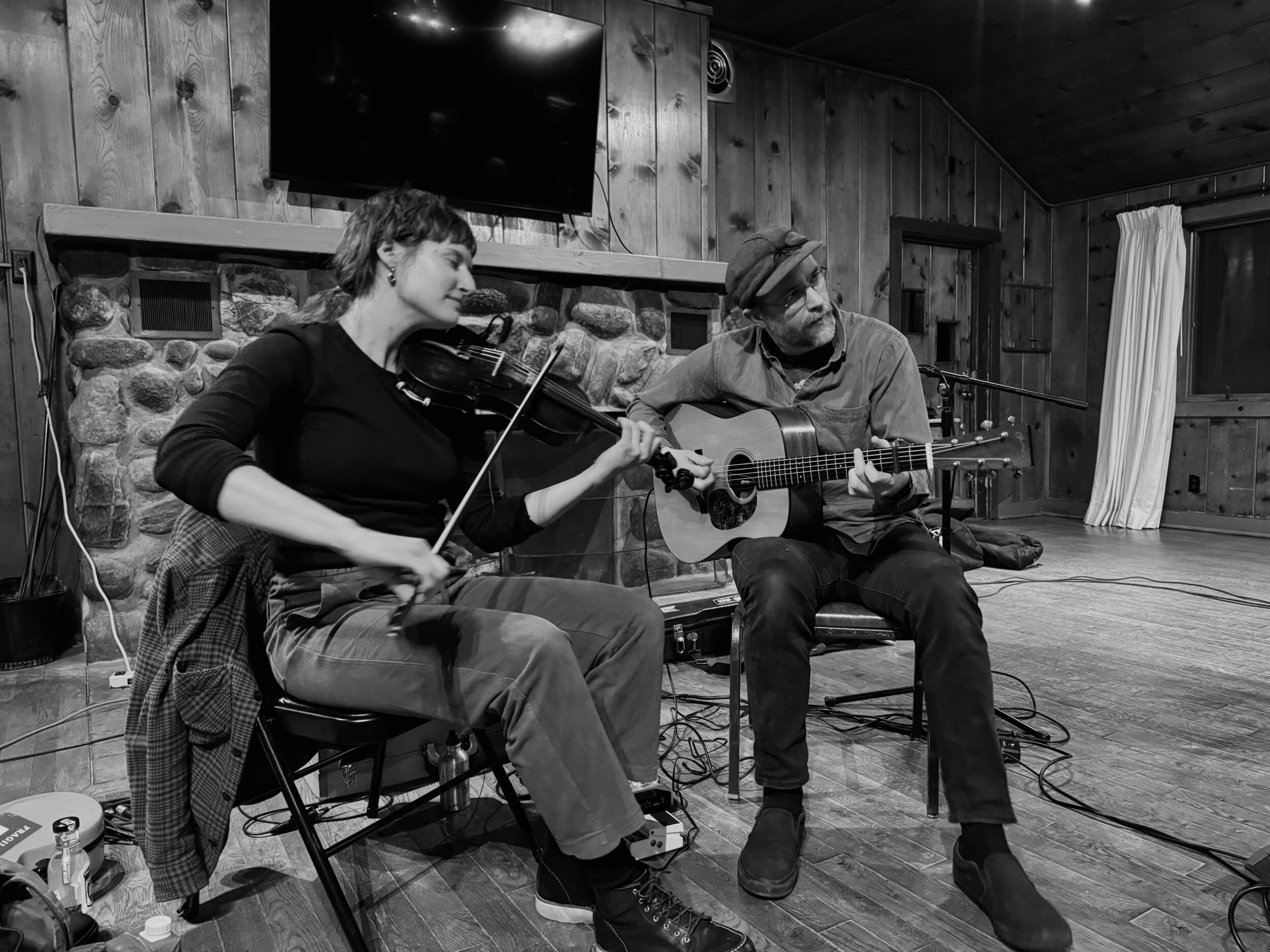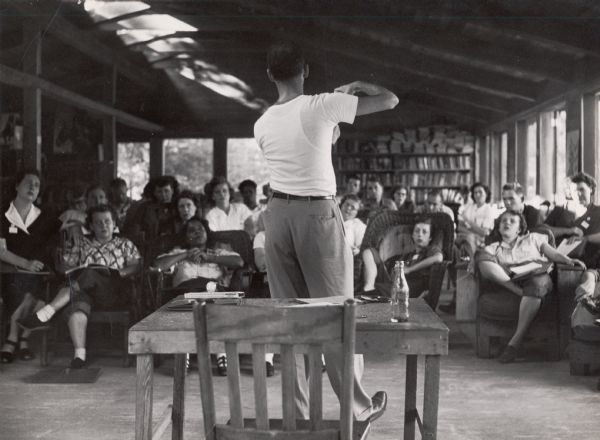Reflections on Our First Folk School Weekend

One of the most exciting things about starting a folk school—and trust me, there are many—is that every week brings huge new developments.
For example, last Friday night, we opened our doors to the public for the very first time with a Barn Dance. And guess what? People showed up! I love when that happens. The next morning, still buzzing from the night before, our program director Lauren led a virtual retreat for a small group of Green Door instructors to gear up for our first-ever classes this weekend. The retreat was insightful and refreshing thanks in part to the passion and wit of our instructors, but also to Lauren’s masterful facilitation, with her gentle but probing questions that made us all reflect on what it really means to teach and learn.
But first, let’s talk about that barn dance.
The energy was electric—like a pent up urge to dance that people didn’t realize they had.
The crowd was a fantastic mix—some were Bayside Travellers regulars, others were contra newbies. There were young and old, Green Door supporters and total newcomers. I watched squares of young dancers whoop and holler when they finally nailed a tricky move. I saw seasoned contra dancers step in to guide beginners through a ladies’ chain, pulling their partners along with patience and encouragement.
At its core, the night was built on a very folk schoolian principle: the willingness to try something new—or the generosity to share your expertise.
Some favorite moments from the night:
- Someone saying they couldn’t remember the last time they saw so many people truly present—smiling, making eye contact, and completely unplugged from their phones.
- A family that drove two hours from Ludington just for the chance to dance.
- A dancer rubbing their jaw between sets because they’d been grinning so hard it hurt.
- A young person saying, “I think this is where I’m meant to be.”
- Someone describing the night as “old ways meeting new ways.”

Of course, we couldn’t have done it without our dream team: caller Pat Reeser, who kept the controlled chaos of contra moving with steady, calming guidance, and musicians Laurel Premo and Michael Beauchamp-Cohen, who filled Gilbert Lodge—Bayside Travellers’ old stomping grounds—with warm, familiar melodies. Again and again, longtime dancers told us how wonderful it was to be back in that space.
The biggest takeaway? People are hungry for social dance. They want to stand in a room with live music, look someone in the eyes, hold hands, and move together. We’ve always planned for regular contra dances to be part of our folk school, but this night confirmed it: we’re already plotting the next time we can swing and promenade together.
From the dance floor to the (virtual) classroom.
Still riding the high from Friday night, I logged into Lauren’s instructor retreat the next morning.
Lauren kicked things off with a deceptively simple question:
What is your craft?
From there, the conversation flowed effortlessly. What is our relationship to craft and creative processes? How can we create safe spaces for students to not just fail, but—as Improv Comedy instructor Madison Meter put it—“fail with flair”?
Also, holy cow, our instructors are incredible. Just listening to them talk about teaching felt like an art form in itself. They understand that teaching adults isn’t just about passing on skills—it’s about teaching people how to learn again. Unlike the last time most of us were in a classroom (probably because we were required to be), adults come to class for all kinds of reasons. Some are there to build confidence. Some are searching for their voice. Others are simply looking for new friends. Our instructors get this. They know that hands-on learning is deeply personal, and they treat it with care.
We also talked about what makes Green Door classes different.
Our classes are rooted in place and in the particular. The materials we use come from a landscape shaped by sandy soils and miles of freshwater shoreline. Without rigid curricular guidelines or milestones, our instructors teach through their own lens, shaped by their experiences and philosophies. For example when you learn to spin yarn from Amy Tyler, you don’t just learn the mechanics—you learn her approach to movement, rhythm, and the act of making as an embodied practice. When you learn wet felting from Lauren Dahl, you’ll tap into the creativity and playfulness she cultivated while teaching the craft to Waldorf school students.
The specifics of each class and instructor reminded me of this quote from James Joyce:
“For myself, I always write about Dublin, because if I can get to the heart of Dublin, I can get to the heart of all the cities of the world. In the particular is contained the universal.”
I think that’s true for Northern Michigan, too. When we understand this place—through craft, through community, through learning together—maybe we start to understand each other better, too.
As much as we’re focused on building a community of learners, there’s an equally powerful opportunity to nurture and support teachers—to create space for them to learn from each other.
A few questions to leave you with.
At the retreat, Lauren led us through some free-writing prompts that got me thinking about the shared vulnerabilities of teaching and learning. I’ll leave them here for you, in case you’d like to reflect on them yourself:
- Think of the last time you tried something new. What feelings come to mind? Did you try it again? Why or why not?
- Describe a time when you felt accepted, embraced, and supported. What stands out in your memory? Who or what was impactful?
- Think of a time you were in a teaching role. It could be sharing a folk craft, showing a friend a simple skill, or explaining something to a child. Did you try different approaches? Were you successful?
- Contrast this with a time you were a student. What worked (or didn’t) in the way your teacher approached the lesson? What did it teach you about yourself?


